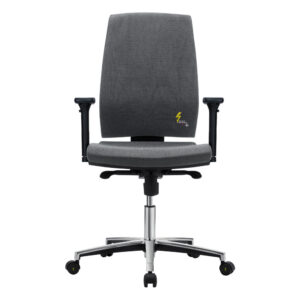Why do we take and give shocks every time we touch something?
Did it ever happen you were sitting at your desk, a person you don’t know comes up, you get up, hold out your hand and when you touch yourself you get shocked? Do you touch your hair and get shocked? Did it ever happen you were working in the factory, touched metal objects and got shocked?
There are many examples, but the question remains the same: why do we take the shock from the objects and people we touch?
The cause is static electricity, let’s see what it is, and how we can stop taking the shock.
Static electricity is the superficial and localized accumulation of electric charges on a body. It can occur both in a conductive material and in an insulating material. It is a natural phenomenon or rather it is the “form” that electricity takes in nature.
How is static electricity produced?
Static electricity is produced due to a transfer of electrons from the body of one object to another.
The way in which static electricity is produced is by “rubbing” two objects on each other.
In technical language, static electricity is also called triboelectricity.
 How does static electricity occur?
How does static electricity occur?
Static electricity occurs through electrostatic discharge.
The most common manifestations of static electricity are: the lightning or spark that occurs when, for example, a person touches metal objects such as cars or locks.
What is electrostatic discharge?
Electrostatic discharge is the phenomenon by which the electrostatic charge possessed by a body is neutralized.
Discharge occurs when an electrified body comes into contact with another body with a different electrical potential.
But how can you avoid taking the shock?
The main advice is to humidify the environment in which we find ourselves, in this way, thanks to humidity, energy dissipates from our body faster and does not accumulate it does not discharge when we touch, for example, a handle, or any other ‘conductor’ object or person.
But the best way to solve this problem is to choose an antistatic chair from Gref.
Gref is Grendene’s department that has been created with the strong mission to promote and guarantee safety for people who are exposed to electrostatic discharges in EPA areas.
In effect the chair is a dissipative vehicle for the electrostatic charges and it is essential and irreplaceable within the antistatic equipment, in the implementation of an anti-E.S.D. system, because it performs a dual function:
1. It prevents the generation of electrostatic charges on the sitting person’s body, despite one’s movements.
2. It guarantees the connection to the ground, discharging the static electricity that may accumulate on the person’s body.
